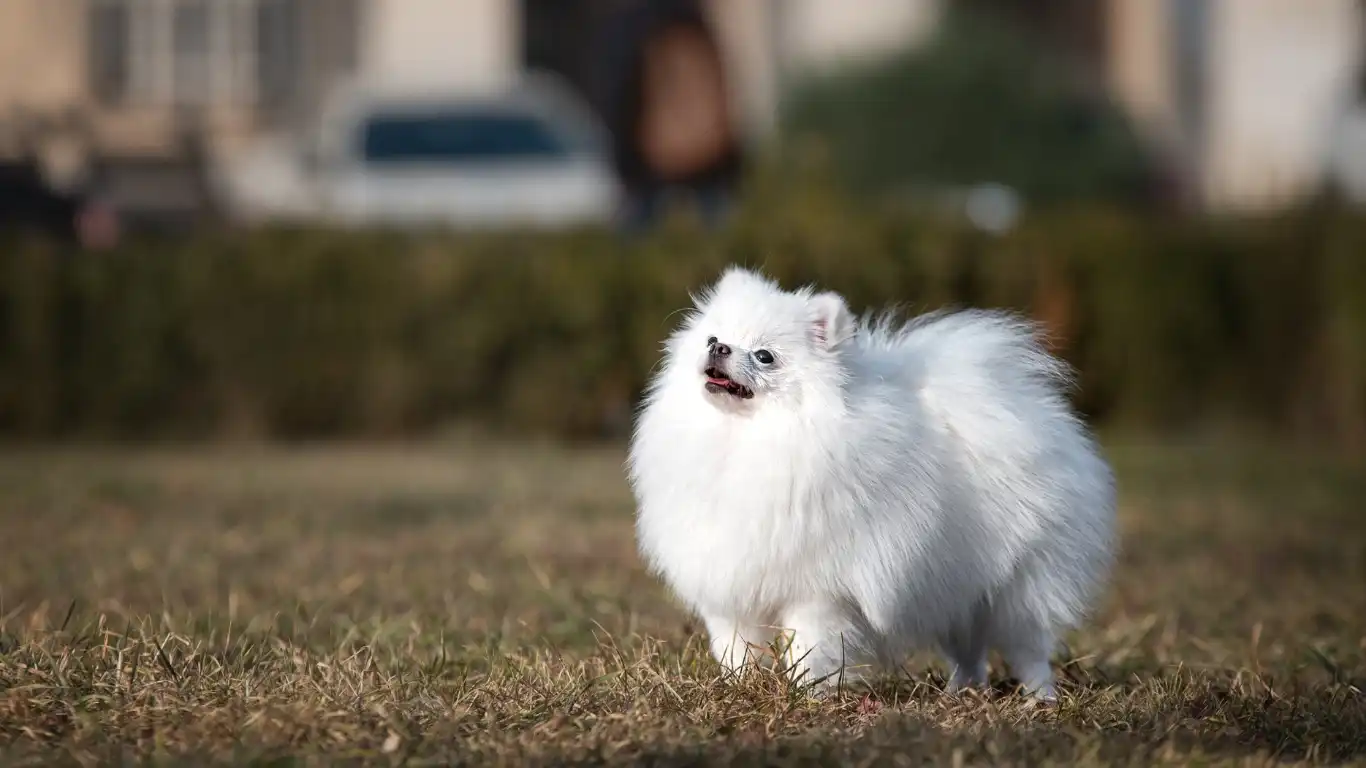How to Properly Clean a Dog’s Tear Stains: 5 Effective Methods
When it comes to caring for your furry friend, tear stains are one of those little annoyances that can be both uncomfortable for your dog and unsightly for you. As a pet nutritionist and expert working in a veterinary clinic, I’ve seen this issue quite a bit. Many pet owners don’t know how to properly clean a dog’s tear stains, and it’s a common concern I address regularly. Tear stains are more than just a cosmetic issue; they can indicate underlying health problems, especially if not treated properly. But don’t worry, I’ve got your back with a step-by-step guide on how to keep those tear stains at bay, with tips and tricks I’ve gathered over the years working with pet parents and their dogs.
Understanding Tear Stains: Why Do They Appear?

Tear stains are exactly what they sound like: stains around your dog’s eyes that are caused by excessive tear production. These stains can be red, brown, or even black depending on your dog’s breed, diet, and overall health. But why do they happen in the first place?
As a pet expert, I can tell you that there are several reasons dogs develop tear stains. The most common culprits are:
- Excessive tearing: Some dogs naturally produce more tears than others. While it’s a normal bodily function, when it happens too much, the tears can overflow and stain the fur.
- Breed predisposition: Certain dog breeds, like Poodles, Shih Tzus, and Maltese, are more prone to tear stains due to their eye shape or facial structure. If you have one of these breeds, don’t be surprised if tear stains are a regular issue.
- Blocked tear ducts: A blockage in the tear ducts can prevent the tears from draining properly, causing them to pool around the eyes.
- Allergies or infections: Sometimes allergies or eye infections can cause your dog’s eyes to water more than usual, leading to tear stains.
When I first started working with pets, I remember a particular case where a dog’s tear stains were not just due to excessive tears but also an undiagnosed eye infection. It’s always a good idea to consult your vet to rule out any underlying health conditions if your dog suddenly develops tear stains.
How to Properly Clean a Dog’s Tear Stains

Now, the big question: how to properly clean a dog’s tear stains? While there are plenty of products out there claiming to be miracle solutions, you don’t need to break the bank to get your dog’s face looking fresh and clean. With a few simple tools and techniques, you can keep your dog’s tear stains under control.
Step 1: Gather Your Cleaning Supplies
First, let’s talk about what you’ll need. Here are some basic supplies I recommend based on my experience:
- Soft cloth or cotton pads: These are perfect for gently wiping away the stains without irritating your dog’s sensitive skin.
- Tear stain remover: There are many safe tear stain removers available on the market. Look for ones that are specifically designed for dogs, and avoid anything with harsh chemicals.
- Saline solution or eye wash: If your dog has sensitive eyes, a saline solution can help clear away excess tears and dirt. This is especially useful if your dog has a history of eye infections.
- Clean water: Always use fresh, clean water to rinse or wipe around the eyes. Don’t use tap water if it’s too hard or contains minerals that could irritate your dog’s skin.
Step 2: Gently Clean the Area Around the Eyes
Cleaning your dog’s tear stains should never feel like a struggle. Always be gentle, especially if your dog has sensitive skin around the eyes. Here’s how I suggest going about it:
- Soak your cloth or cotton pad in a saline solution or a mild tear stain remover. Make sure it’s damp but not dripping wet.
- Gently wipe away the stain in the direction of your dog’s natural fur growth, starting from the corner of the eye and moving outward. Don’t press too hard, as this area is very delicate.
- If the stain is particularly stubborn, let the solution sit for a few seconds to break it down before wiping it off gently.
- For dogs with very thick fur, you may need to carefully trim the fur around the eye area to prevent it from trapping moisture and causing more stains. But make sure to only trim the fur and not get too close to the skin or eyes.
Step 3: Dry the Area Thoroughly
After cleaning, it’s essential to dry the area completely. Moisture can easily get trapped around your dog’s eyes, leading to further irritation and, in some cases, infections. You can use a dry, soft towel to gently pat the area around the eyes. Be sure to avoid rubbing it as this can irritate the sensitive skin.
One tip I often share with pet owners is to make sure your dog’s eye area stays dry, especially if your dog is prone to excess tearing. Keeping the fur around the eyes dry can prevent staining and promote healthier skin around the eyes.
Step 4: Be Consistent
Consistency is key when it comes to maintaining your dog’s tear stain-free appearance. As a pet nutritionist, I can tell you that regular cleaning is crucial. Depending on your dog’s breed and the severity of the tear stains, you may need to clean their eyes daily or every few days. I’ve found that sticking to a routine really helps to manage and prevent tear stains from becoming a persistent issue.
Stay tuned for more helpful tips and techniques to keep your dog’s eyes healthy and tear-free. In the next section, we’ll dive into some natural remedies and pet-safe alternatives to commercial tear stain removers!
Natural Remedies for Tear Stains

If you prefer a more natural approach, there are plenty of pet-safe remedies that can help manage your dog’s tear stains. These methods not only work effectively, but they are also gentle on your dog’s skin and eyes, which is something I always recommend when it comes to pet care.
1. Using Coconut Oil
Coconut oil is a favorite natural remedy for many pet owners, and for good reason. This versatile oil has anti-inflammatory and antibacterial properties, making it great for soothing the skin around your dog’s eyes. It can also help clear away stubborn tear stains.
Here’s how to use coconut oil:
- Take a small amount of organic, virgin coconut oil (make sure it’s safe for pets) and gently rub it between your fingers to warm it up.
- Apply a small amount of the oil directly to the tear-stained areas.
- Gently massage the oil into the fur, and then use a soft cloth to wipe away any excess oil and dirt. You can also leave the coconut oil on for a few minutes before wiping it off.
In my experience, using coconut oil a couple of times a week can make a noticeable difference in reducing tear stains. Plus, it’s an all-natural, safe option for your dog’s sensitive skin!
2. Apple Cider Vinegar (ACV)
Another home remedy that I’ve had success with is apple cider vinegar. This pantry staple has natural antibacterial and antifungal properties that can help combat the root causes of tear stains, especially if they’re caused by bacteria or yeast.
Here’s a simple method to use ACV:
- Mix 1 teaspoon of apple cider vinegar with a cup of water. Ensure it’s diluted so it doesn’t irritate your dog’s skin.
- Soak a cotton pad in the solution and gently wipe around the tear-stained area.
- Wipe again with a damp cloth to remove any remaining vinegar solution.
ACV also works from the inside out, so some pet owners add a teaspoon to their dog’s water bowl to promote internal health, which can help with tear production and staining. But be cautious—always check with your vet before adding anything new to your dog’s diet.
3. Chamomile Tea Compress
Chamomile tea isn’t just good for humans; it’s also beneficial for dogs. Chamomile has soothing and anti-inflammatory properties that can help calm irritation around your dog’s eyes and reduce staining caused by inflammation or infection. I’ve personally recommended this to clients whose dogs suffer from itchy, red eyes.
To make a chamomile tea compress:
- Brew a cup of chamomile tea and let it cool completely.
- Soak a soft cloth in the cooled tea and apply it gently to the stained area for a few minutes.
- Repeat this process once or twice a day, depending on the severity of the tear stains.
Chamomile is very gentle, making it a great option for regular use without causing irritation. Plus, it has a calming effect on both dogs and their owners, which is always a win in my book!
Preventing Tear Stains: Diet & Health Considerations

As a pet nutritionist, I can’t stress enough how much your dog’s diet impacts the health of their eyes—and ultimately, their tear stains. Certain foods can contribute to excessive tear production, while others may help keep things under control. Let’s explore how you can tweak your dog’s diet to prevent tear stains and promote overall eye health.
1. Avoiding Artificial Additives and Preservatives
One of the first things I suggest when dealing with tear stains is taking a close look at your dog’s food. Many commercial pet foods contain artificial colors, preservatives, and additives that can trigger excessive tearing in some dogs. In my practice, I’ve often seen a direct correlation between these ingredients and tear staining in sensitive dogs.
To reduce the risk of tear stains, I recommend feeding your dog a high-quality food with natural ingredients, free of artificial additives. Look for foods that have high-quality animal proteins as the first ingredient and avoid fillers like corn or soy.
2. Adding Omega-3 Fatty Acids
Omega-3 fatty acids play a vital role in maintaining healthy skin, eyes, and overall immune function. Many dog owners overlook the importance of these essential fatty acids in their pet’s diet, but they’re crucial for keeping your dog’s eyes moist and healthy.
You can incorporate Omega-3s into your dog’s diet through fish oils or flaxseed. I often recommend adding a small amount of fish oil to meals, especially for dogs that are prone to dry eyes or tear stains.
3. Probiotics for Gut Health
Did you know that gut health and tear stains can be connected? It’s true! In my experience, dogs with an imbalance in their gut bacteria are more likely to develop various skin conditions, including tear stains. Probiotics can help restore balance to your dog’s gut, improving digestion and reducing inflammation that might lead to excessive tearing.
You can find probiotics specifically formulated for dogs in most pet stores or online. Adding them to your dog’s food is an easy way to support their overall health and potentially reduce tear staining.
Managing Tear Stains with Regular Grooming

Regular grooming is another essential aspect of managing tear stains. While it’s important to clean the tear-stained area, it’s also necessary to keep the fur around the eyes trimmed and well-maintained. This not only prevents further staining but also helps your dog feel more comfortable, especially if they have long or thick fur that traps moisture.
1. Trimming the Fur Around the Eyes
One of the most effective ways to prevent tear stains is by keeping the fur around your dog’s eyes short and clean. This ensures that tears won’t accumulate in the fur, reducing the chance of staining. If your dog has long fur around their face, regular trimming (either by you or a professional groomer) is essential to keeping tear stains at bay.
2. Regular Bathing
Bathing your dog regularly can help maintain clean fur and skin, including around the eyes. Just make sure to use a mild, dog-safe shampoo and avoid getting soap in your dog’s eyes. I recommend using a gentle wipe to clean around their eyes after baths, especially if your dog is prone to tear stains.
Grooming isn’t just about aesthetics; it’s about overall health. Keeping up with regular grooming helps catch potential health issues early, whether they’re related to tear stains or something else entirely.
When to Consult a Veterinarian About Tear Stains

As much as we try to manage tear stains at home, sometimes the problem goes beyond just surface cleaning. If your dog’s tear stains persist despite your best efforts, or if they suddenly appear and worsen, it may be time to consult your veterinarian. I always tell pet parents that when it comes to your dog’s health, it’s better to be safe than sorry.
Here are a few red flags that indicate it’s time for a vet visit:
- Sudden onset of excessive tearing: If your dog suddenly starts tearing excessively and the stains seem to appear out of nowhere, there could be an underlying health issue, such as an eye infection or blocked tear ducts.
- Red or inflamed eyes: If the area around your dog’s eyes is red, swollen, or excessively irritated, it could indicate an infection or allergy that requires medical attention.
- Yellow or green discharge: If you notice yellow or green discharge coming from your dog’s eyes, it’s a sign of an eye infection. In these cases, a vet visit is crucial for proper treatment.
- Chronic or worsening tear stains: If tear stains persist despite your efforts, your dog may have a condition that requires professional diagnosis and treatment. Conditions like conjunctivitis or dry eye (keratoconjunctivitis sicca) need specialized care.
It’s always important to stay on top of your dog’s health and monitor any changes. As a pet care expert, I always recommend regular veterinary check-ups, especially if your dog’s tear stains are part of a larger issue. Your vet will have the expertise to diagnose the cause of excessive tearing and recommend the best course of action to keep your dog comfortable and healthy.
Preventing Tear Stains Through Proper Hygiene and Care

While cleaning and managing tear stains is essential, prevention is always the best approach. Establishing a routine of proper hygiene and care can go a long way in preventing the buildup of tear stains in the first place. Here are some preventative tips that have helped many of my clients reduce the frequency and severity of tear stains:
1. Regularly Clean Your Dog’s Eyes
Routine cleaning is a must! I can’t emphasize this enough—if your dog is prone to tear stains, make it a habit to clean their eyes regularly. Whether it’s once a week or every few days, keeping the fur around your dog’s eyes dry and free of excess tears can prevent staining from happening in the first place. Regular cleaning also helps remove any debris that could cause irritation.
2. Keep Your Dog’s Environment Clean
Keeping your dog’s environment clean is just as important as cleaning their eyes. Dust, pollen, and other allergens can contribute to excess tearing, so it’s vital to ensure your dog’s living space is as clean and comfortable as possible. Vacuuming often and using air purifiers can help reduce allergens and keep your dog’s eyes healthy.
3. Invest in Proper Nutrition
Your dog’s diet plays a huge role in preventing tear stains. A healthy, balanced diet with high-quality ingredients supports your dog’s overall health, including the health of their eyes. As I mentioned earlier, Omega-3 fatty acids and probiotics can make a big difference, but it’s also essential to ensure that your dog’s food is rich in nutrients that promote skin and eye health. High-quality protein sources, vitamins, and minerals will help prevent the overproduction of tears that can lead to stains.
4. Trim Fur Around the Eyes Regularly
Maintaining short, clean fur around your dog’s eyes is a simple yet effective way to prevent tear stains. If your dog has long hair, be sure to trim it regularly to avoid trapping moisture, which can create a breeding ground for bacteria and cause staining. It’s easy to do at home with the right tools, but if you’re not comfortable doing it yourself, a professional groomer can help.
5. Hydrate Your Dog Properly
Keeping your dog hydrated is also a vital part of preventing tear stains. Dehydration can cause the eyes to produce more tears, leading to excess staining. Ensure your dog always has access to clean, fresh water, and monitor their water intake, especially during hot weather or if your dog is particularly active.
When to Use Tear Stain Products and How to Choose the Right One
Sometimes, home remedies and regular cleaning aren’t enough, and you may want to explore commercial tear stain products. But with so many options on the market, how do you choose the right one for your dog? Let me share some advice on how to pick the best tear stain product, based on my experience working with pets and their owners.
1. Look for Natural, Safe Ingredients
As much as possible, choose products that contain natural, pet-safe ingredients. Some products may contain harsh chemicals or dyes that can irritate your dog’s skin or eyes. Always read the ingredient list carefully and consult your vet if you’re unsure whether a particular product is safe for your dog.
2. Choose Tear Stain Wipes or Solutions with Antibacterial Properties
Some tear stain removers are formulated with mild antibacterial properties that help prevent the buildup of bacteria around the eyes. I’ve personally found these types of products to be effective at removing stains and preventing new ones from forming. If your dog is prone to eye infections or irritation, look for a solution that contains mild antiseptic ingredients like aloe or chamomile, which are soothing and safe for sensitive skin.
3. Avoid Harsh Treatments
While it may be tempting to use heavy-duty products that promise to eliminate tear stains fast, I always recommend avoiding overly harsh treatments. Products with bleach or other strong chemicals can irritate your dog’s skin and eyes, potentially causing more harm than good. It’s better to choose a product that offers gradual improvement rather than an instant fix.
4. Consult Your Veterinarian for Recommendations
If you’re unsure which product to use, don’t hesitate to ask your veterinarian for recommendations. They know your dog’s health history and can recommend products that are both safe and effective based on your dog’s needs.
References & Disclaimer
For further reading and research on dog care, you can explore reputable sources like Google or visit trusted veterinary websites.
Disclaimer: This article is intended for informational purposes only and should not be considered veterinary advice. Always consult your veterinarian if you have concerns about your pet’s health or if their condition worsens. While the methods and suggestions provided here are based on my experience, each pet is unique, and what works for one may not work for another.






